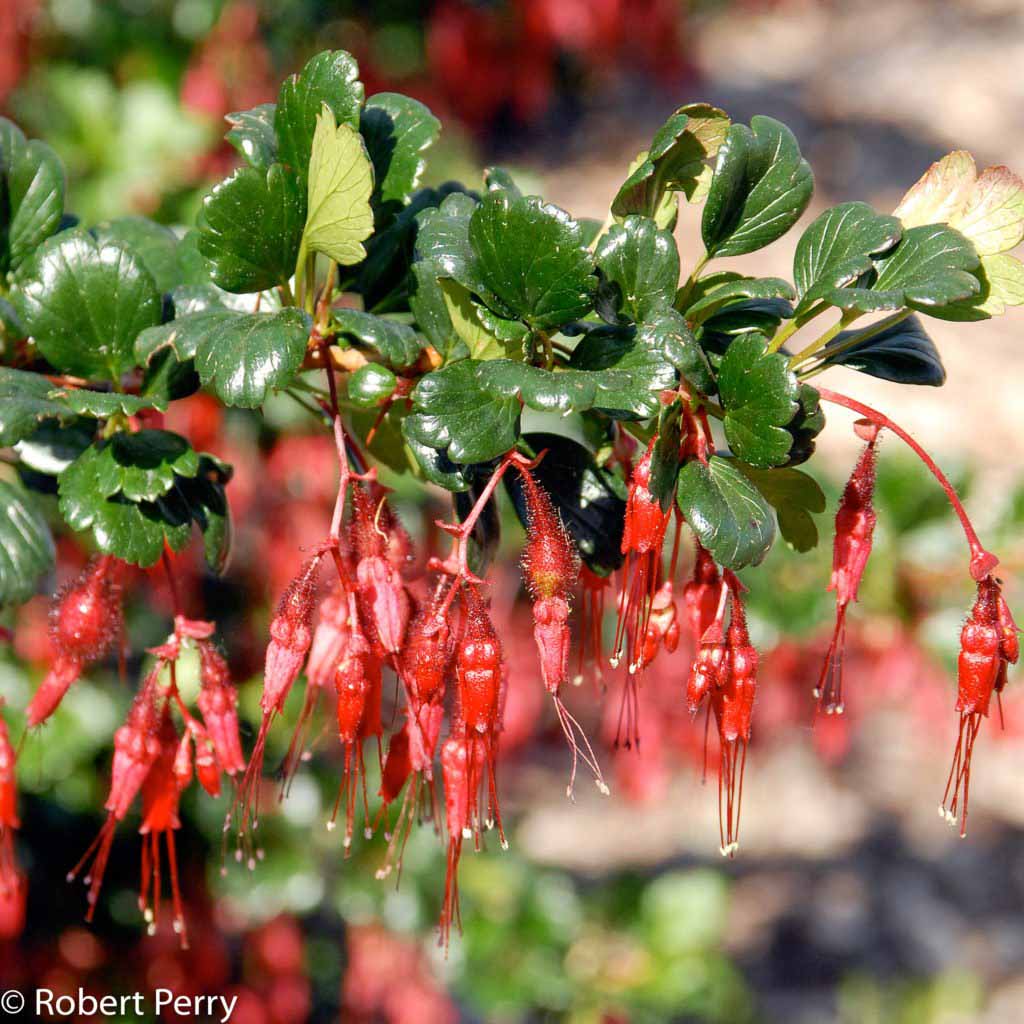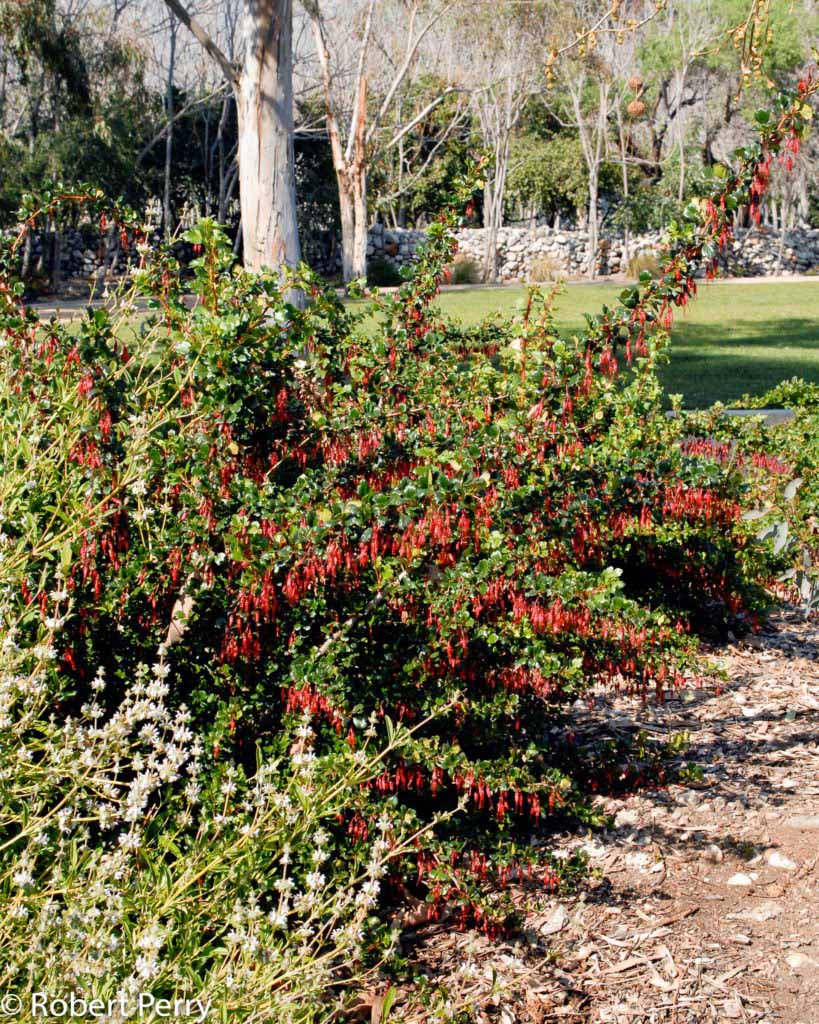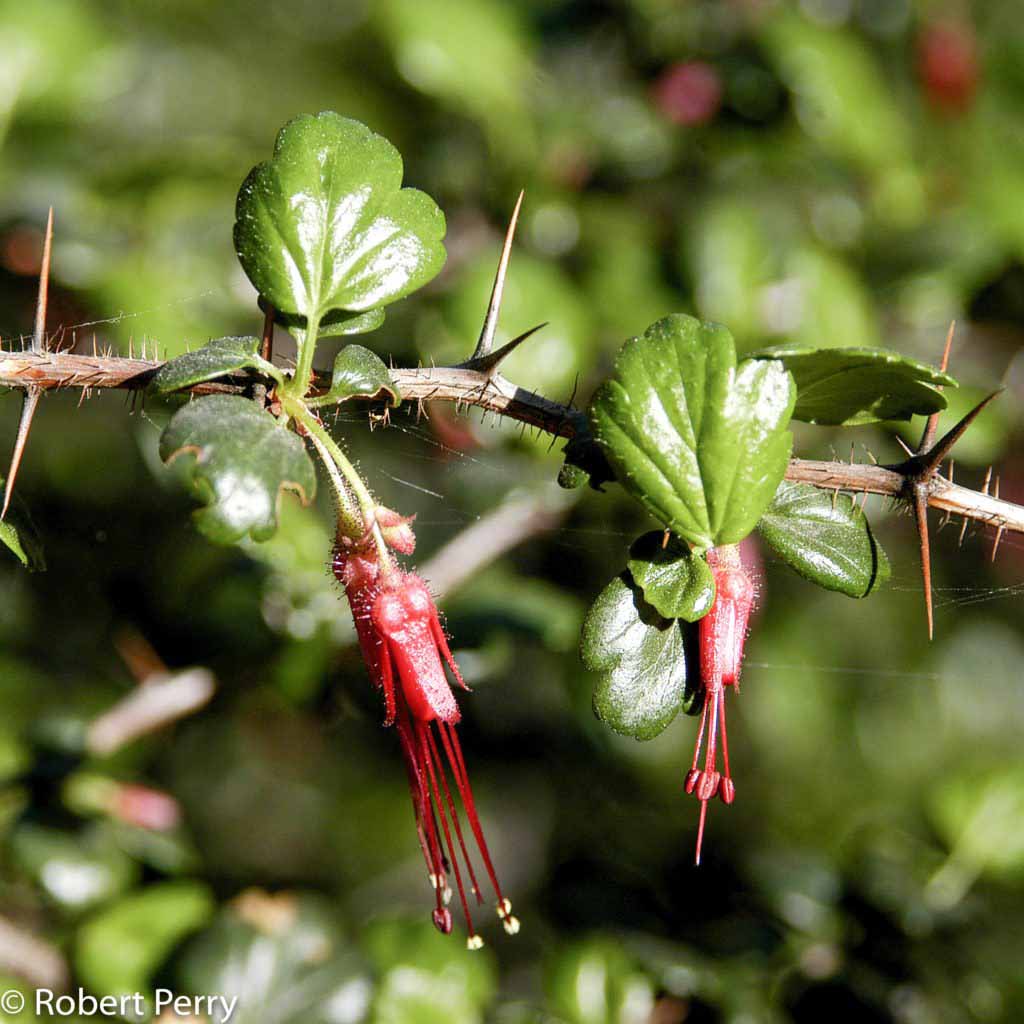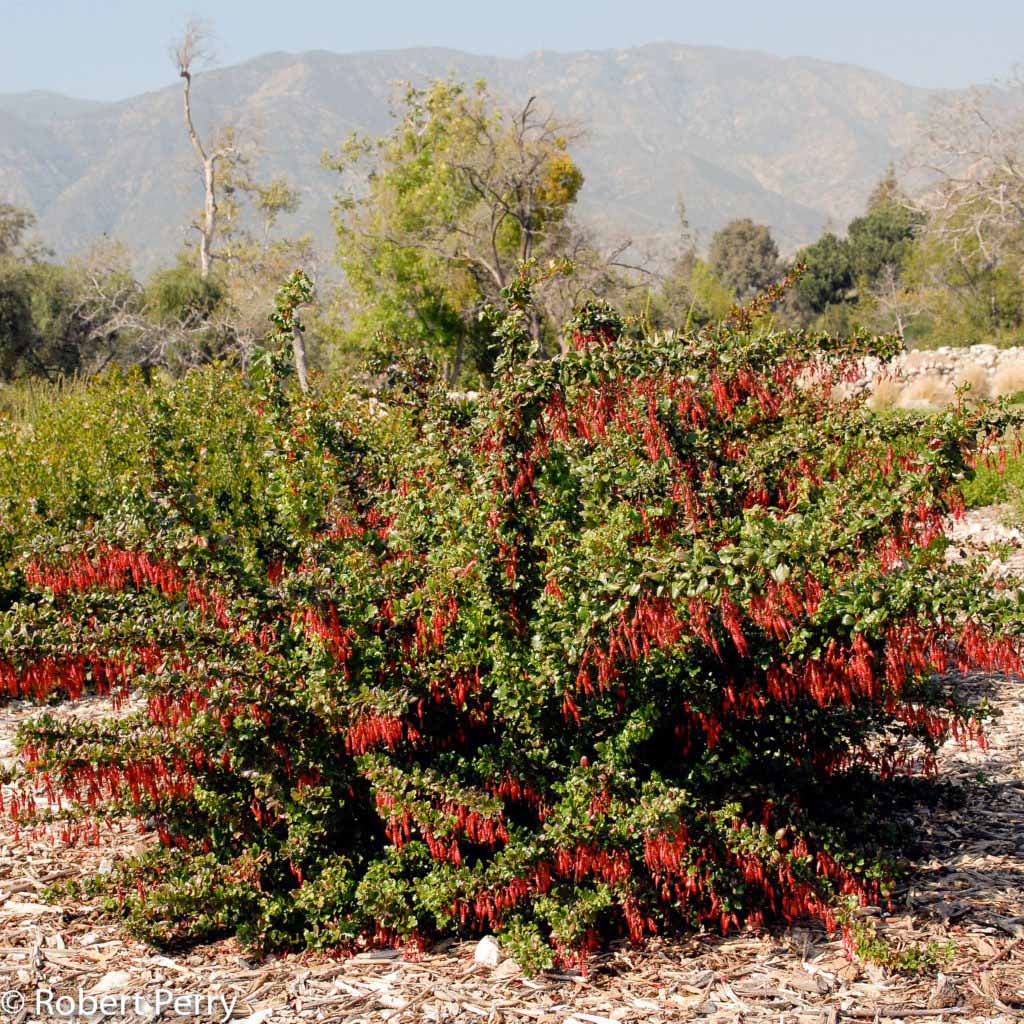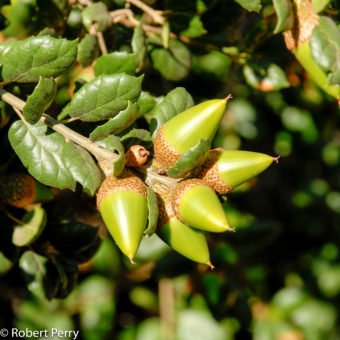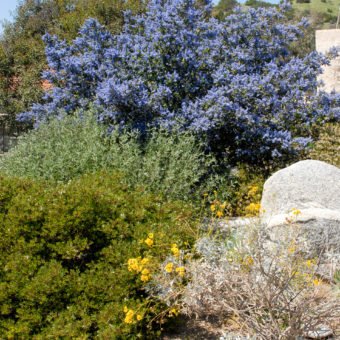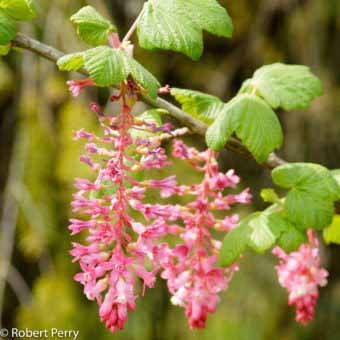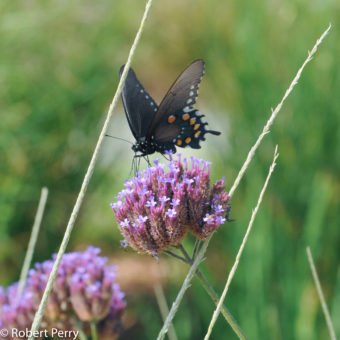The Fuchsia-flowered gooseberry is a small to medium size deciduous shrub, growing with arching branches 4-6 ft. tall and as wide. Stems are covered with numerous sharp spines; glossy deep green leaves have large round lobes on margins. Large numbers of colorful bright red fuchsia-like flowers hang downward from branches during early spring and attract hummingbirds. Numerous spiny berries develop and persist into summer.
Fuchsia-flowered gooseberry is native to coastal foothills from the San Francisco bay area through coastal and inland areas of Southern California. It does best on north facing slopes and along seasonal drainage with more moisture and protected from hot afternoon sun conditions.
The Fuchsia-flowered gooseberry is an easy to grow understory plant that contributes its attractive flowering value to the Western Sycamore Palette. Its best character occurs in partial shade with periodic watering during summer; it is often used on banks and in understory plantings, and set away from pathways where people can appreciate the flowers but not be harmed by the spines.
